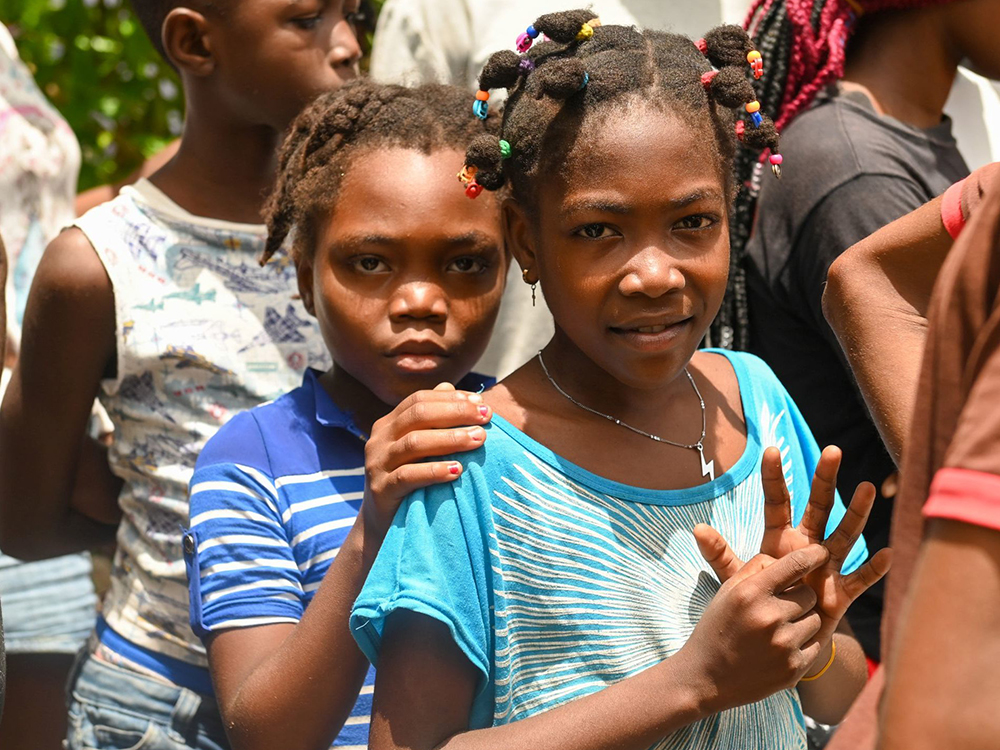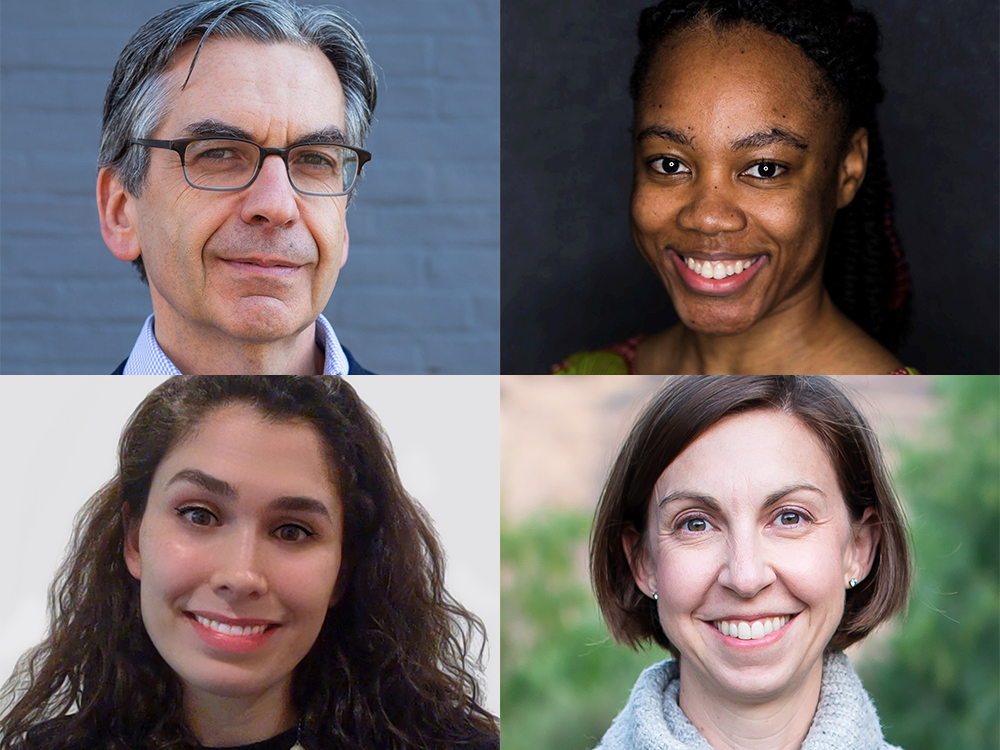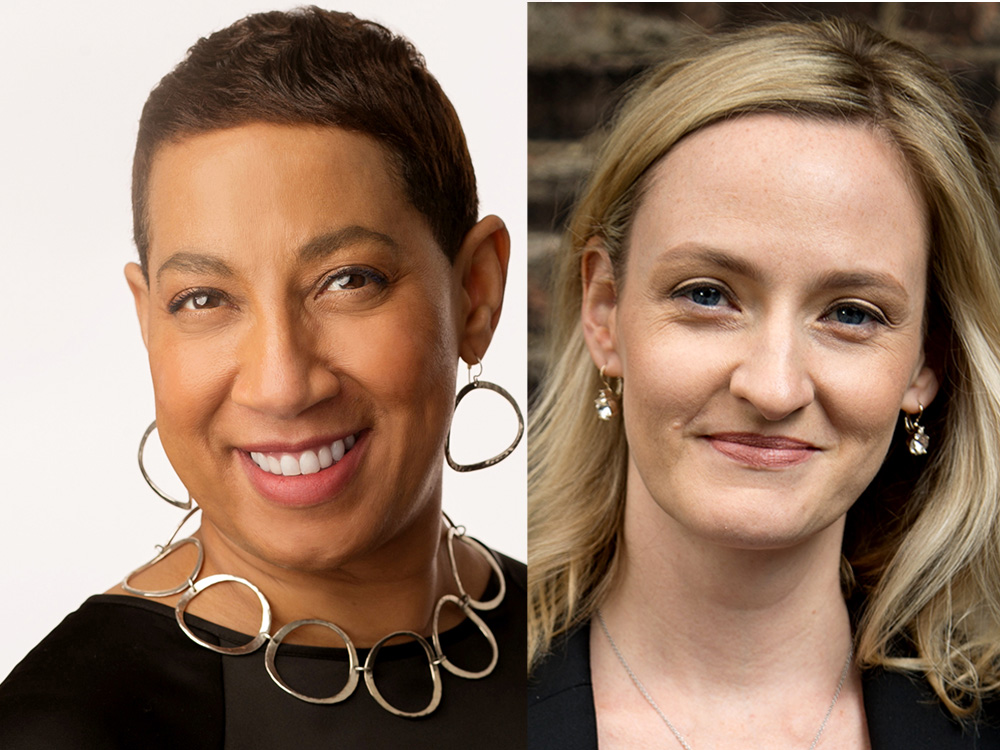
With the urgency this era demands, we have to ask ourselves: What if we did things differently? What if we took a risk to get a better outcome? And if we aren’t willing to do that, what are we really doing?
Amplifier started as a risk – in fact, our organization risked everything on one big project.
Following the divisive U.S. presidential election of 2016, we used our one unrestricted operating grant and funds raised through a subsequent crowdsourcing effort to launch a campaign called We The People. The goal was to flood the 2017 inauguration with new symbols of hope around an American identity rooted in pluralism. We took out three full-page ads in national newspapers, hacking their existing distribution networks in order to reach every corner of the nation, sneaking messages of hope past the barricades in Washington, D.C. (where protest signs were effectively banned for the inauguration). We also distributed tens of thousands of large placards throughout the city, handing them out free at Metro stops, from the back of moving vans, and at drop sites coordinated over social media. Ultimately, more than a million people, in 195 countries, downloaded “We the People” prints for free from Amplifier’s website, which they then turned into everything from protest signs and murals to t-shirts and dresses, making it the most viral art project in history.
That investment paid off: Today, we are a mid-sized nonprofit design lab that builds art and media experiments to amplify the most important movements of our times. (And sales from We The People artwork continue to support our organization to this day!)

Together with our community of social change partners in both the for-profit and nonprofit worlds, we build symbols and language that change the national narrative. We turn artists into activists, observers into participants, and marchers into voters. Since 2015, we’ve collaborated with 10,000-plus artists around the world and distributed millions of pieces of art. We’ve also sent resources to millions of students across the U.S. through our Education Amplifier program, which offers free artwork, lesson plans, and teaching tools to help facilitate nonpartisan conversations around social justice in the classroom. We’ve built the nation’s largest network of educators committed to amplifying progressive movements in their classrooms, and just recently launched a national program to teach teens how to make movement art with the award-winning Unshuttered photography program at the J. Paul Getty Museum.
Due to careful fiscal management, we’ve had the operational capacity to respond to this year’s defining events. In March, we launched an emergency COVID-19 campaign with top art curators and public health advisors from around the world. In just five weeks, our global open call competition received over 10,500 submissions from 46 countries, in 21 languages. As a commitment to solidarity, we raised grant funds to provide artists’ fees for the winners and reclaim over 10 million dollars in ad space globally. The campaign was featured widely, in The New York Times and National Geographic, on NBC and NPR, and elsewhere. And this summer, we launched an original art campaign for the movement for Black lives in our hometown of Seattle, as part of an ongoing programmatic focus on racial justice. This winter, we are taking a risk again with a new post-inauguration campaign to build strength of spirit among those most vulnerable to the threats at hand.
To shift the culture, it takes a tidal wave: We can’t expect to achieve real, lasting change – in our organizations or our society – by making ripples. To ensure that riskier projects and organizations can take root, flourish, and lead the way forward, we advocate for American philanthropy to take these two steps:
- Expand the idea of who gets funded. American philanthropy should invest in BIPOC-led groups, which have been historically undercapitalized and underrepresented in this sector as well as in the halls of power. It should also prioritize people who are both thinkers and doers: those who wield influence over the way families, communities, issues, fields, or sectors operate. Art and cultural organizing bring their own “X factors” to bear to narrative- and culture-shift work, but the fields of business, media, technology, and academia each have unique strengths to offer.Also, make a point to fund nontraditional projects or organizations, including hybrid organizations that do more than one thing. For instance, we at Amplifier aren’t traditional journalists, artists, organizers, or educators. We do all of those things: arts and culture, marketing and communications, media justice, and democracy-building work, crafting stories and campaigns that cross platforms. Through that hybrid approach, we have come to play a central role in the organizing space – but we’re only able to do that because someone invested in us in the first place.
- Expand the idea of what gets funded. American philanthropy should invest generous amounts of general operating support in the endeavors it funds. It should also look beyond traditional leadership and models, considering the people involved first, and their business model second. Leaders from under-resourced groups – such as people of color and women – might be less committed to the traditional 501c3 model due to lack of access to funding, connections, and legal support, or simply due to their interest in other business structures. More philanthropies should be model-agnostic when it comes to financing.
The real battle for the future of this nation is a narrative one. The story we tell about what we see in the mirror defines who we can become, as a country. After this election, we are going to need to rebuild hope; that involves rebuilding our national spirit but also rebuilding our sector to operate more equitably than it did in the past. And we cannot wait: With the existential threats posed to our democracy, and our very life on this planet, the time to act is now.
Let’s do more than innovate: Let’s risk it all. Let’s think big, and act swiftly. And as we complete each step, let’s ask ourselves: Do things look differently than they did before? If so, good.
After all, just what do we have to lose? Everything.
Photo credit (top): Jessica He



